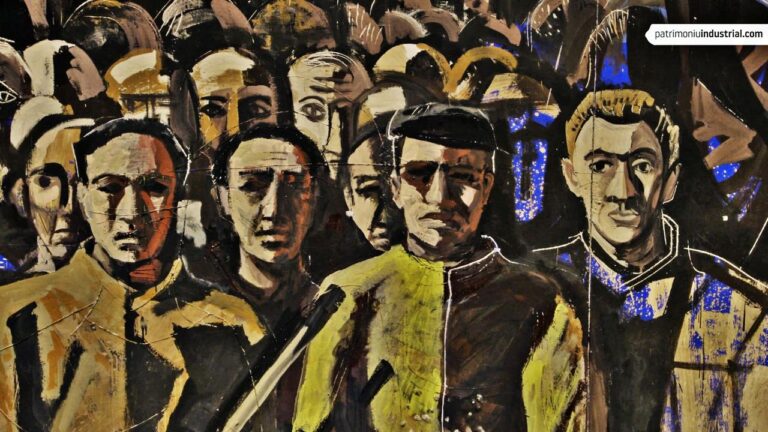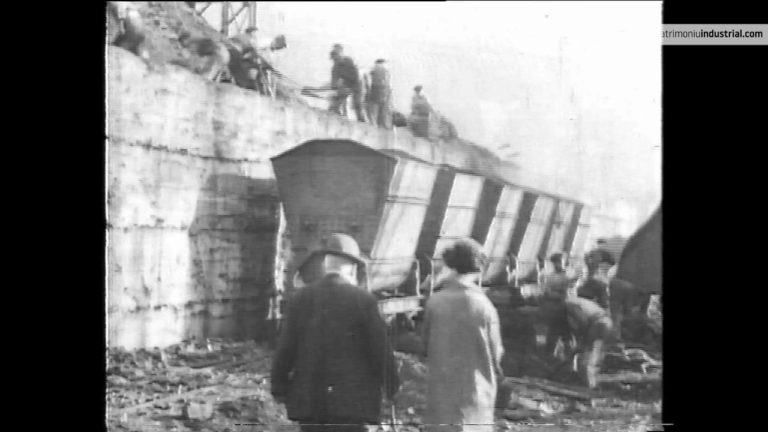
by Natalia Tielve García
Ph.D. in Art History. Tenured Professor of History of Art at the University of Oviedo. Secretary of INCUNA (Industrial Archeology Association) and a Member of the Cultural Heritage Council of the Principality of Asturias.
The golden age of the machinery, the long process of industrialisation that began in the 18th century with the introduction of organised and mechanical work, has left a deep imprint on the society, the art and the culture.
Sigfried Giedion, in his famous essay Mechanisation Takes Command, did not hesitate to consider the promotion of progress, technology and machinery as the most elementary pillars on which contemporary society has been built: energy, dynamics, functionality, adaptability, seriation, standardisation or rationality. These are values, attributes and perceptions intimately linked to mechanisation. These values have had an undeniable impact on lifestyles and ways of thinking, in time and space, in cultural and artistic manifestations, both in their symbolic and significant dimensions.
The world of work, the work order, the landscape and, of course, the living space can be traced and recognised in different disciplines ranging from painting to music, sculpture, cinema, photography, comics and other creative proposals. Images, words, actions and evocations (material and immaterial) are the result of all these experiences that help to design the narrative of industrialisation. There is a whole range of representations which, from their communicative and expressive potential, contribute to creating and recreating, constructing and reconstructing the memory of work and industry. Echoes of a know-how and a know-how-to-be, of trades, customs and sociability that have inevitably been diluted.
A cultural and artistic dimension that links the past with the present and on which we can recognise ourselves: the industrial identity of an extremely fragile heritage, systematically threatened by a perverse postmodern attitude, where trivialisation is unfortunately associated with the spectacular feature. The darkest side of Saturn lurks from this attitude: the one linked to voracity and the desire for modernisation, fed by greed and demolition fever. There is only one way forward: knowledge, reflection and communication. Only those who know something can respect it.
Álvarez Areces, M.A., Arqueología Industrial: el pasado por venir, CICEES, Gijón 2007.
Álvarez Areces, M.A. “Un Futuro para nuestro pasado”, en revista Arquitectura Viva, p. 13-19, 2016.
Domínguez Rodríguez, R, “La marquesina de la Rocica. Un punto de inflexión en la salvaguarda del patrimonio industrial de Avilés (Asturias)”, en Urbs et ager, 2019.
Suárez Antuña, F.; Ruiz de la Peña Ruiz, D. “El patrimonio Industrial asturiano en la ordenación urbanística. El Catálogo Urbanístico del Plan territorial Especial de recuperación de los terrenos de Hunosa en las cuencas mineras”, en V Congreso Internacional para la conservación del patrimonio Industrial y de la obra Pública en España, TIICH- España, 2009.
Suárez Antuña, F., “Los instrumentos de protección del Patrimonio industrial en el marco del planeamiento y la ordenación urbanística”, en Ruiz de la Peña Ruiz, D. (Coord.): Los Catálogos Urbanísticos en el Principado de Asturias, Universidad de Oviedo, 2013, p. 187-214.
Tielve García, N., “La memoria del pasado industrial. Conservación, reutilización y creación de nuevos equipamientos”, e-rph. Revista de Patrimonio Histórico, 2016.
Tielve García, N.; Suárez Antuña, F., “Patrimonio Industrial en Asturias. Un balance metodológico”, en Pensar y actuar en el patrimonio industrial. Nuevos enfoques en la arqueología y el patrimonio industrial, CICEES, INCUNA, 2018.




Recent Comments